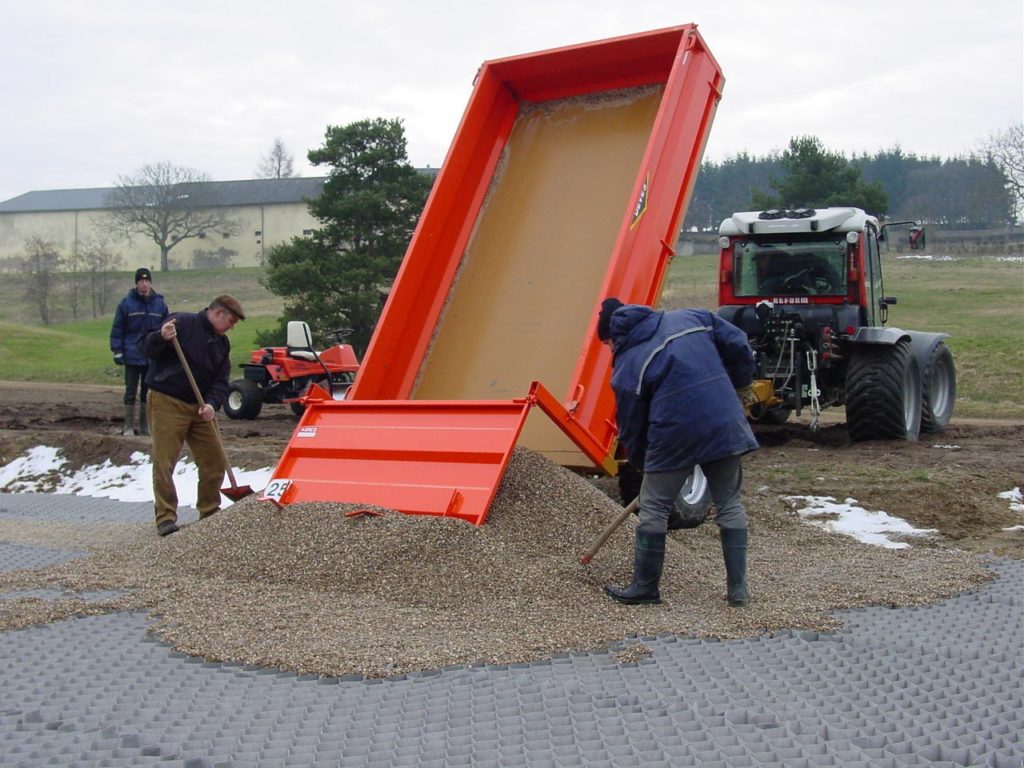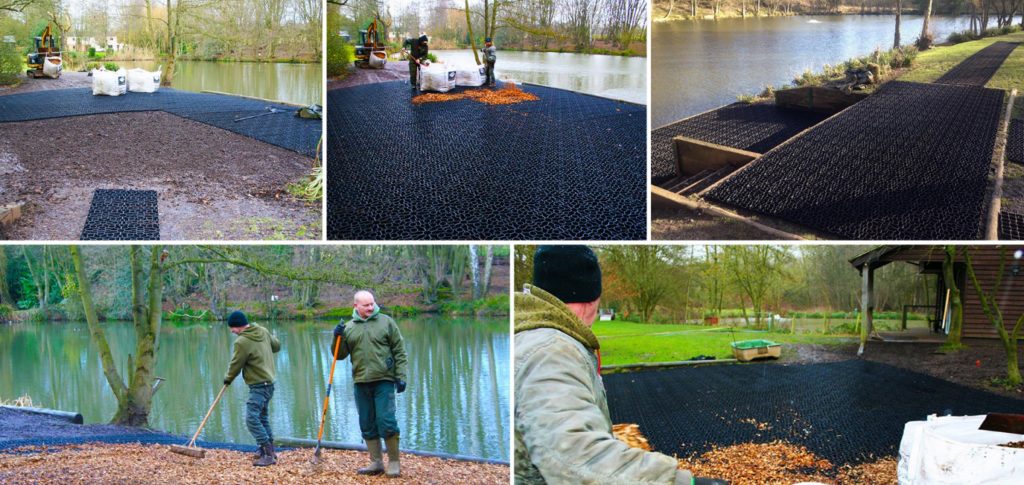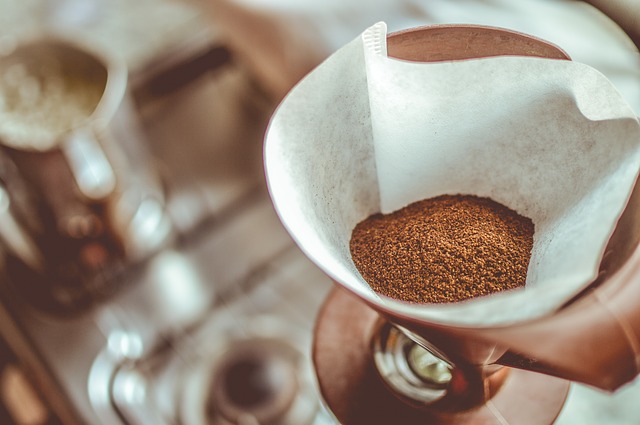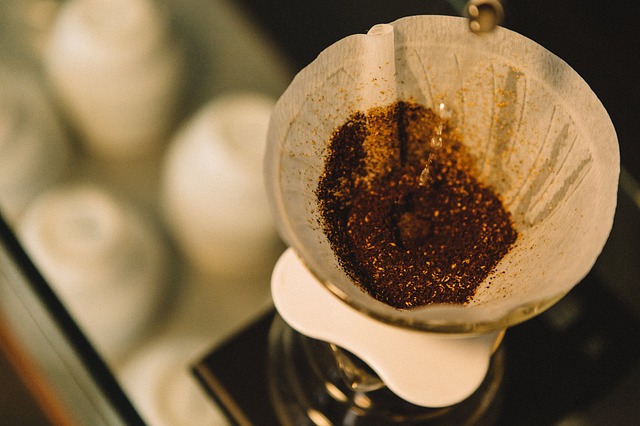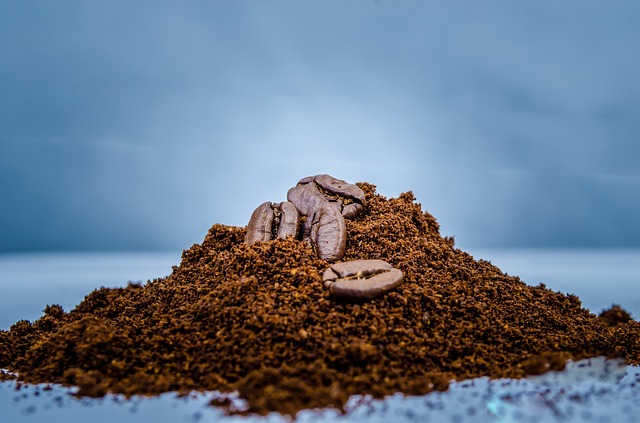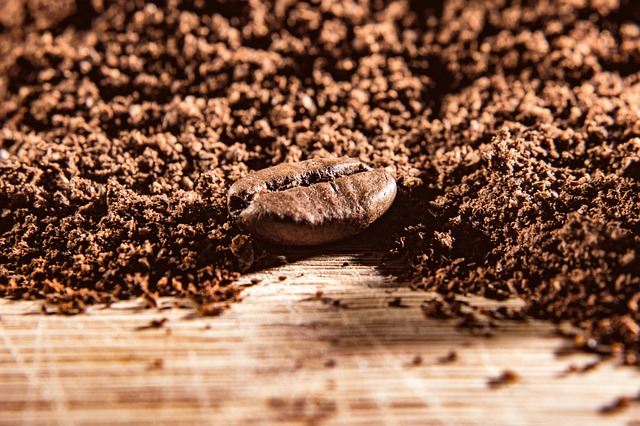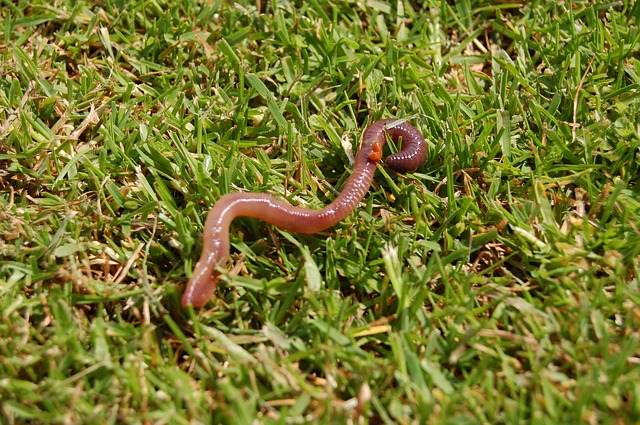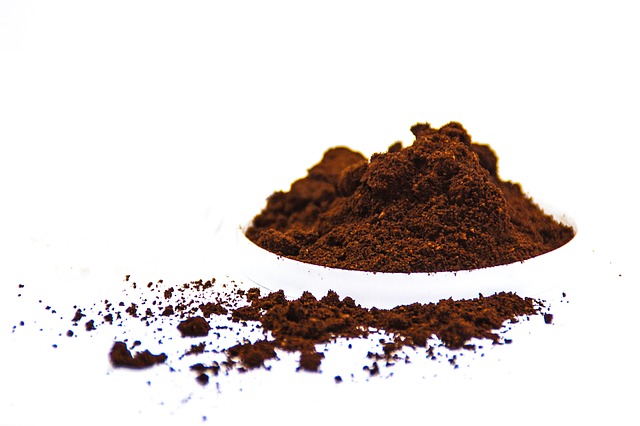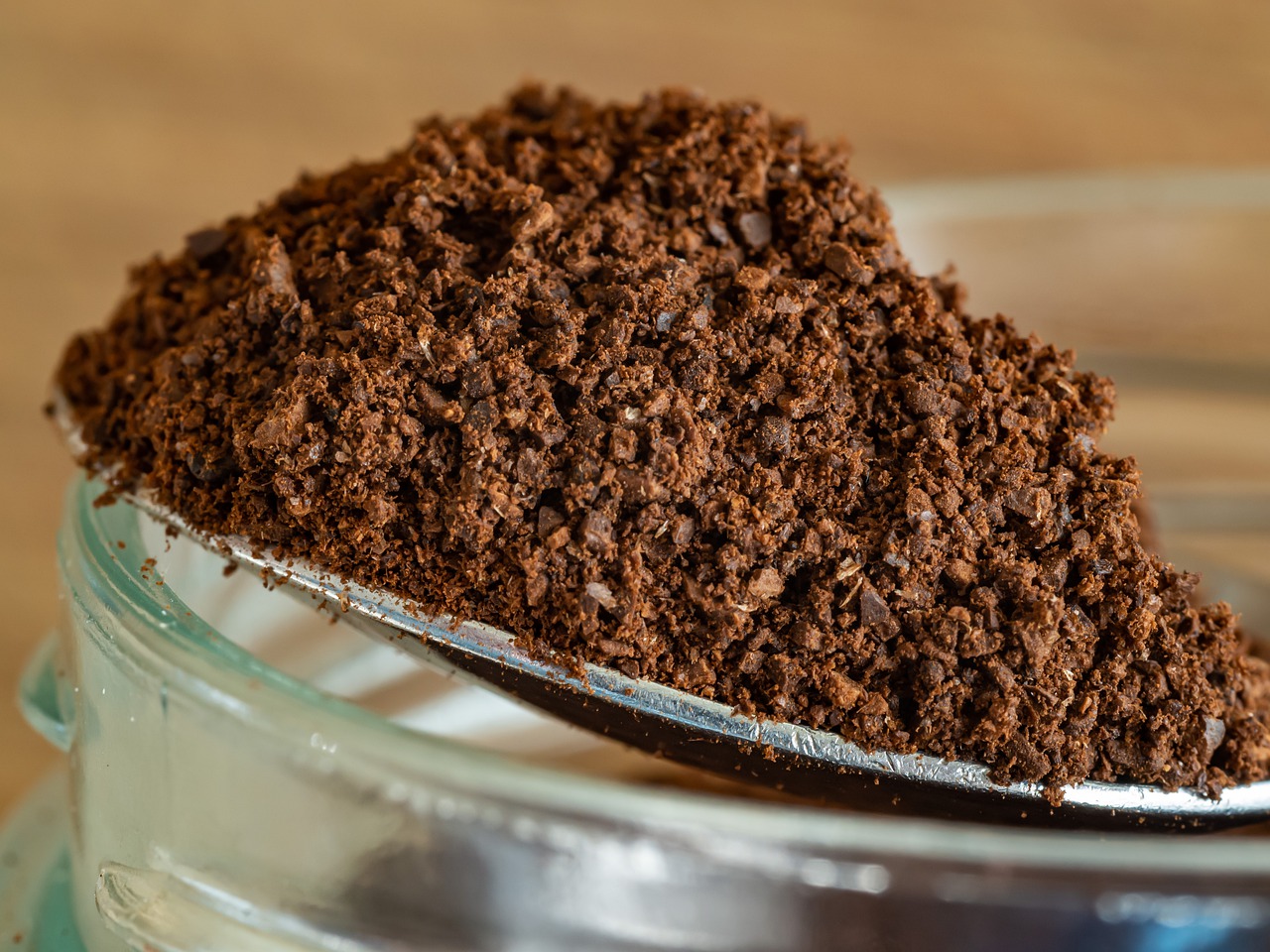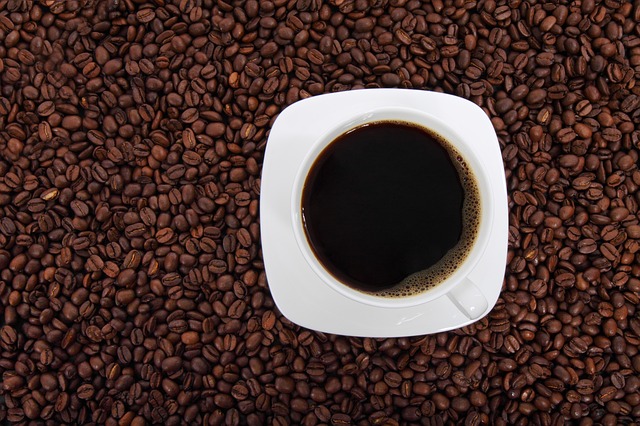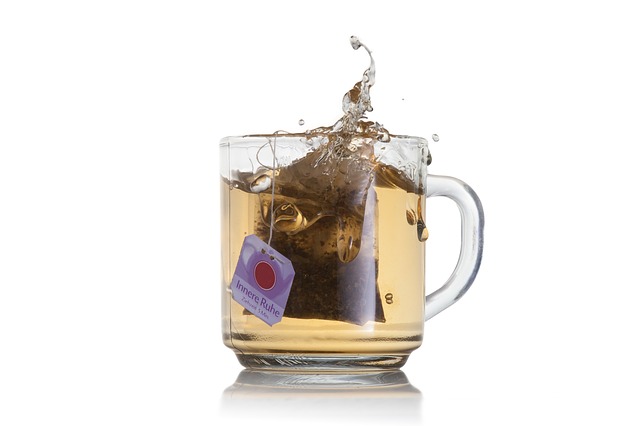Many locations around the world get a lot of rain. With an average of 33 inches of rain per year, this is especially true in the U.K. where it is rare for a day to pass that it is not raining somewhere. Regardless of where you live this can lead to problems with garden and patio flooding. Water can accumulate in the ground and prevent excess runoff from being absorbed properly.
Most problems with waterlogging and flooding in most gardens tend to stem from poor landscaping and lack of ground preparation to help rainwater drain away, this is where the use of eco-friendly plastic grids can come in handy.
Headaches You Don’t Want To Deal With
One of the biggest problems that can occur from poor drainage is the increased risk of flooding which can damage not only your garden but also your home. Excessively wet soil that does not dry up can cause problems inside the home such as flooding, water seeping into the brickwork, increased risk of mildew and mold, and weakening of cement and mortar.
In the garden, it can lead to boggy or marshy conditions that prevent plants and grass from surviving, soil full of bad bacteria, foul-smelling odors, and a decline of the soil. It can also make the ground very soft causing heavier items such as sheds and patios to begin to sink or tilt, and brick walls to warp and fall down.
Create Drainage Channels
In order to prevent these types of things happening, you will need to provide a way for water to drain away from the ground. The first step to take is to provide drainage channels that are dug around 4 feet underground and filled with a coarse material such as gravel, pea shingle, or slate chips.
The channels should lead away from any areas that contain structures and where the water can easily flow out off. Once the channels have been filled the soil should be backfilled and it is always a good idea to mix gravel into the soil layer too.
A Base For Support
Next, you want to provide a supportive base for the grass or patio by employing the use of some eco-friendly plastic grids that allow water to escape easily. Eco-friendly plastic grids consist of an open cell structure that allows rainwater to pass through with ease and also helps keep grass, gravel, and patios level and in place.
The whole idea is to provide a stable and solid base that does not prevent excess water from permeating into the ground yet remains an eco-friendly and cost-effective option.
Defeating Clay-Rich Soils
Flooding tends to occur most commonly in clay-rich soils where the fine particles clump together and prevent water molecules from passing through. This can be problematic in areas where there is a high proportion of clay-based soil.
To combat this can prove to be a big job and usually involves having the garden dug up and a medium such as gravel or peat mixed into the soil before putting it back. It is during this stage that it is a good idea for the drainage channels to be dug or to have plastic drainage pipes installed underground.
It is important to ensure that you have the soil compacted after as if you fail to do this then it will slowly drop over time leading to uneven surfaces. Using plastic grids can help retain a level surface as the interlocking grids provided a single, stable layer.
Grass roots can create a thick layer that can delay the drainage of water, to help deal with them you can use a garden fork to aerate the ground and create micro-holes that will allow the water to escape.
Deal With The Sources Of Water
Some of the main sources of excess water are roofs, roads, and driveways. To reduce the effects of flooding these areas should be taken care of. If a roof is the main cause of water collecting in the garden then it is a good idea to have drains fitted to the roof to divert the water away into the drainage system.
Roads and driveways should already have drains installed, but if this is not the case you could have a small brick wall built to prevent water from entering the garden. As most flooding problems are caused by impermeable materials such as cement and tar it is a good idea to consider better options such as gravel driveways and patios with large enough spacing to allow water to drain away.
A gravel driveway is a perfect solution for dealing with areas that flood as the gravel will allow the water to pass through freely and into the ground below. If you are installing or thinking of installing a gravel driveway then you need to consider using plastic grids that lock together to be placed beneath the surface.
The interlocking units prevent the gravel from moving and help stop potholes or uneven distribution of the gravel. The specially designed grids also allow water to pass through them and can support up to 420 tons of compression per square meter.
You could opt not to use grids but they are the better option for gravel driveways due to being eco-friendly, water permeable, strong and durable, and cost-effective.
Without some form of barrier beneath the gravel, you will experience shifts in the stones leading to them becoming dispersed, the potential of them being absorbed by the ground beneath, and less drainage due to compression into the soil below.
Keep Patios Flood-Free
Grids are also an excellent option when installing a patio as they not only provide a solid and level surface for the patio slabs but also provide a gap between the slabs and the soil beneath them so that water can drain away quickly.
If water is left standing on a patio it can lead to a build-up of algae which can not only become very slippery making the patio a safety hazard but also cause damage to the surface of the slabs over time.
When laying a patio DO NOT fill the gaps between the slabs with cement or grout, use fine pea shingle and have it compacted in the spaces so that it acts to keep the slabs in place while allowing water an escape route.
Water will always follow the point of gravity, meaning that any sloping areas of uneven surfaces will attract the water making it harder for it to drain away in those parts.
Save Your Garden
A garden that floods is a garden that is difficult to enjoy, especially if it is always an uphill battle to keep the ground dry and your plants alive. You could take advantage of planting thirsty trees such as Willow, Pumpkin Ash or River Birch which all soak up huge quantities of water.
Plants that help are Hibiscus, Petunias, and many tropical plants such as Banana and Canna which absorb a lot of water quickly. Preventing flooding normally takes a multifaceted approach and relies on some hard groundwork for maximum benefits.
Once the soil is improved and you take advantage of plastic grids beneath the surface level and provide adequate drainage you will never have to worry about flooding in the garden again. It can be a daunting and frustrating process working out how to regain control over your lawn and patio and once you know where to begin you can start to improve upon it.
Remember to take advantage of nature’s sponges by utilizing water-thirsty plants and trees and to add mulch, shingle, or loam to your soil to help break up any clay contained in it.
Digging drainage channels is a great idea if you have the time and energy to do so as they help move the water away rather than leaving it to sit in the soil. Using eco-friendly plastic grids can allow for easy draining, and provide a secure and hardy base for grass, shingles, pebbles, gravel, and patio tiles.
The design of the grids allows water to escape quickly and helps prevent surface build-up. At the same time, grids keep the surface secure preventing potholes and dips that allow water to sit for longer.
A well-looked-after garden that has been planned out to prevent flooding will provide you with a gorgeous space where you and your family can create lasting memories for years to come. If you have been suffering from a waterlogged lawn or patio, try these steps to remedy the problem or prevent it before it starts!
Author Bio: MatsGrids are suppliers of Ground reinforcement systems, grass reinforcement, and protection mesh for domestic and commercial landscaping projects. Our business mission is to become the UK’s leading supplier of groundworks, civils, and landscaping products.
Start Shopping for Permeable Pavers!
Does Copper Tape Stop Slugs?
Does copper tape stop slugs? The answer is yes. And you can use this simple solution to keep your plants safe from those slimy plant-eating pests. Repel Slimy Garden Invaders Without Harm Despite being relatively small and very slow-moving, slugs can do a lot of...
Coffee Grounds For Flowers
For many of us, there’s nothing we’d rather do than relax with a cup of coffee near the flower garden. Most people don’t realize however that the grounds used to make our coffee can help to increase the health and beauty of our garden. Here’s what you’ll need to know...
Coffee Grounds For Roses
Using coffee grounds for roses is a fabulous way to improve the health of your plants, helping them to produce those gorgeous flowers you’ve been dreaming of. But there are a few things you’ll need to know before getting started. Conditions Roses Prefer Roses do best...
Do Roses Like Coffee Grounds?
Do roses like coffee grounds? This is something many gardeners wonder about, especially since feeding roses coffee grounds has been a practice that’s been around a very long time. The answer is yes they do, and here’s what you’ll want to know. Roses And Acidic Soil...
How To Use Coffee Grounds For Grass
You’ll want to think twice before you toss your used coffee grounds in the trash every day. Those grounds can actually be used to feed and increase the health of your lawn. Here’s everything you’ll want to know about using coffee grounds for grass. Advantages Of...
Are Coffee Grounds Good For Grass?
Are coffee grounds good for grass? The answer is yes, so you may want to think twice before throwing away your used grounds after your morning cup of coffee. Instead, you can put them to work helping increase the beauty of your lawn. Benefits Of Using Coffee Grounds...
Are Worms Good For Your Lawn?
Despite their slimy looks worms are well-known for being very helpful in the garden. But are worms good for your lawn? You bet they are, and here’s why! Aeration As worms travel from place to place in the soil below your lawn, they create a maze of tunnels. And those...
How To Use Coffee Grounds For Snails
You don’t have to kill those annoying garden snails in order to keep them from eating your plants. In fact, you can use your morning coffee as a non-lethal weapon against them. When they come into contact with your coffee grounds snails will turn right around and...
How To Use Coffee Grounds For Ants
There are endless sprays and poisons you can use to get rid of ants. However, you won’t have to look any further than your morning cup of coffee if you’d like a repellent that doesn’t contain any harmful chemicals. By using coffee grounds ants will stay away and kids...
Which Plants Like Coffee Grounds?
While using coffee grounds in the garden offers quite a few benefits, they can be slightly acid and therefore not appropriate for all plants. So which plants like coffee grounds? Here’s what you’ll need to know. The Basics Of Coffee Grounds Coffee grounds contain...
Coffee Grounds And Hydrangeas
While many people love their hydrangeas, they often would love them even more if they were blue. Luckily the grounds from your morning cup of coffee can help you to achieve those gorgeous blue blooms. Here’s what you’ll need to know about coffee grounds and...
Coffee Grounds For Worms
Worms are an extremely helpful component of any compost bin or pile, not to mention worm farms. And it turns your morning cup of coffee can contribute to their diet. Using coffee grounds for worms is an easy way to keep them from heading to the local landfill while...
Using Coffee Grounds In The Garden
Your morning cup of coffee can help you to not only start your day off right, but in the garden as well. The grounds used to make it have many important properties that are ideal for both plants and soil. By using your coffee grounds in the garden you’ll be able to...
Using Coffee Grounds In Compost
It’s estimated that over two billion cups of coffee are consumed around the world each and every day. And that’s an enormous volume of grounds which are used and then tossed in the trash. By using coffee grounds in compost instead, you can help cut down on waste and...
Used Tea Bags In The Garden
Many people don’t realize that once you’ve had a cup of tea, your tea bag can be used again in quite a few other ways. There are actually many great uses for used tea bags in the garden. And here are some of the best! Free Natural Fertilizer The tea leaves and...
Used Tea Bags In The Compost
The next time you have your daily cup of tea, you may want to think twice about throwing that tea bag in the trash. Instead of contributing extra waste to landfills, you can help the environment and your garden by placing used tea bags in the compost. But before you...
5 Eco-Unfriendly Things You Do That Kill Your Garden
Any budding gardener out there wants to do the best for their garden and their plants. But are you accidentally causing it harm? Here are five eco-friendly things you do that kill your garden: Buying Plants that Contain Pesticides You may not use pesticides yourself...
7 Reasons You Need to Start Gardening Now
Looking for a fun hobby to help you relax? Get outside and get to work in a garden. Gardening has a variety of benefits for your mental, physical and spiritual health. Wondering how tending to plants can help you tend to your health? Here are seven ways gardening can...
Quick Tips To Speed Up Compost Times
Compost is an excellent soil conditioner and natural fertilizer. However, it can take quite a while for it to break down into a form that you can use. Luckily there are a handful of simple things you can do to help speed up compost times without much effort. Size In...
6 Common Types Of Soil Deficiency And How To Solve Them
Unfortunately, not all soil has the nutrients that plants need to grow and thrive. In some cases, it may be lacking in one area or another and therefore need a boost. Here are the most common types of soil deficiency and the best ways to deal with each of them....
